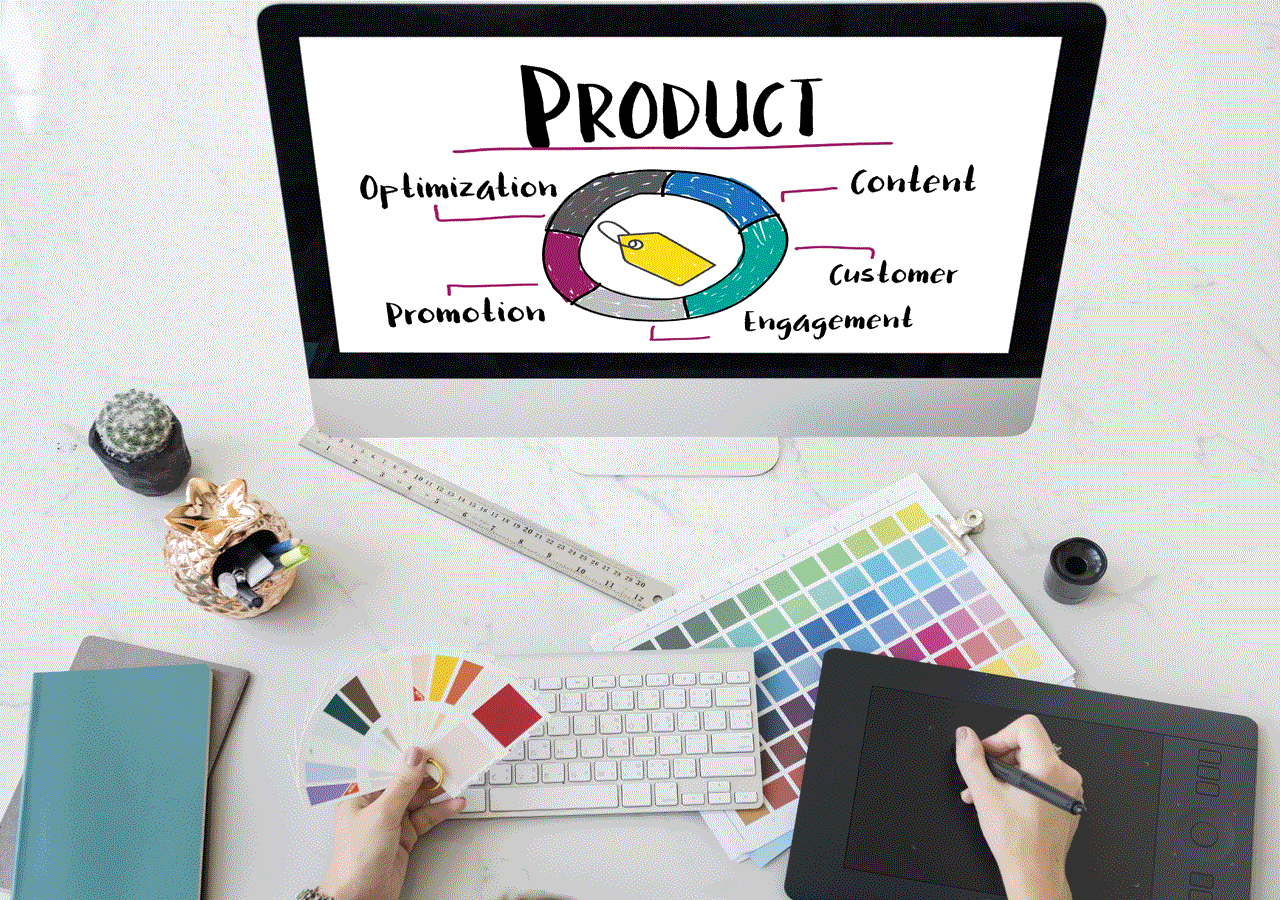How would you define a good product strategy? What should you consider before starting to develop a new product or service?
A good product strategy is essential to the success of any company. In fact, it’s one of the key components of a successful marketing campaign.
“Product Strategy” is defined as the plan for developing a product or service. This involves defining the target audience, determining the value proposition, and creating a unique selling point (USP). It also includes deciding on pricing, distribution channels, and marketing strategies.
What’s the difference between a product strategy and a marketing plan? How should they relate to each other?
Product strategy is the overall vision of your company. It sets out the goals and objectives of your organization. Marketing plans are tactical plans that guide the execution of your product strategy. They include things like pricing strategies, distribution channels, and customer acquisition.
A good product strategy helps you define your target audience, their pain points, and the features and benefits you offer them. This information is then used to create a detailed marketing plan that outlines specific tactics to achieve your goals.
How do I know if my product strategy is working?
It’s important to measure your results against your initial goals. If you’re not seeing improvements in sales, revenue, or market share, you need to reevaluate your product strategy.
You can use Google Analytics to track website traffic, social media engagement, and conversion rates. You can also use these tools to determine which parts of your product strategy are most effective.
For example, you could see how many people visit your homepage, what pages they view, and whether they convert into customers. These metrics will help you decide where you need to focus your efforts next.
How does a product strategy differ from a business model?
A business model describes the financial structure of an organization. A product strategy describes the end-to-end experience of your customers.
Business models are usually more complex than product strategies because they involve multiple stakeholders and often require long lead times. For example, a car manufacturer may have a business model that includes designing cars, building factories, financing loans, and distributing vehicles.
But when it comes to products, there isn’t much room for complexity. The only stakeholder involved is the consumer.
If your product strategy doesn’t align with your business model, you’ll be forced to make compromises. This will limit your ability to deliver a great user experience.
Why do we need a product strategy?
Your product strategy defines who you want to reach, why they would buy your product, and what features and benefits you provide. Your product strategy also tells you how you intend to get those users to purchase your product.
These three elements — your target audience, your USP, and your marketing strategy — form the foundation of your entire product strategy.
Once you’ve determined all this information, it’s time to develop a detailed marketing plan.
Why do we need a marketing plan?
Marketing plans are the nuts and bolts of your product strategy. Without them, you won’t be able to effectively execute your strategy.
They outline everything you need to do to achieve your goals. In addition to defining your product strategy, they describe:
• Who your target audience is
• How you’ll acquire new customers
• What features and benefits you offer
• Where you’ll distribute your product
• Which channels you’ll use to promote your product
• And more!
To write a successful marketing plan, you first need to understand your product strategy. Then you need to identify your target audience, figure out what features and benefits you offer, and choose the best channels to promote your product.
What should I consider before writing a marketing plan?
Before you start developing your marketing plan, here are some questions you should ask yourself:
1. Do I already know my target audience?
2. Am I sure about my USP?
3. Is there enough demand for my product?
4. Will my competitors steal away potential customers?
5. Are there any legal issues I need to address?
6. Can I afford to launch my product now?
7. Does my product fit within my company’s culture?
8. How will I measure success?
9. Have I considered the competition?
10. Should I hire a professional marketer or create my own content?
11. How will I keep up with changing trends?
12. Do I have the right resources available?
13. How will I scale my business if things go well?
14. What are my strengths and weaknesses as a leader?
15. How can I improve myself?
How do I write a good marketing plan?
A good marketing plan starts with a clear understanding of your product strategy. You then define your target audience, which helps you determine which channels to use to communicate with them.
Next, you need to think about the features and benefits you offer. These details help you decide where you’ll sell your product, how you’ll price it, and whether you should bundle other services with your product.
Finally, you need to pick the most effective channels to advertise on. Channels include websites, social media platforms, mobile apps, email newsletters, in-person events, and more.
When you’re ready to write your marketing plan, make sure that each section answers these questions:
Who is your target audience?
Where does your product fall in the buying cycle?
Which features and benefits do you offer?
Which channels will you use to reach your target audience?
How much will you spend per month on advertising?
How will you measure your success?
How will you stay competitive?
How will you scale your business?
Do you have the right people in place?
Are you prepared to handle the unexpected?
How will you ensure that your product fits into your organization’s culture?
Why Product Strategy is important?
Product strategy is one of the most important parts of your overall business strategy. It sets the stage for all of your other decisions, from choosing your product name to deciding who your target audience is.
Without a clear idea of what your product is, how you intend to deliver it, and why someone would buy it, you won’t be able to develop an effective marketing plan.
If you don’t know what you want to build, you may end up building something nobody wants. If you don’t know who your target audience is, you may end up selling to everyone. And if you don’t know how to get your product to market, you might not even bother trying.
That’s why product strategy is so critical. Without it, you could waste time and money on projects that aren’t worth pursuing. Or worse yet, you could fail at launching a product before you’ve even started.
So, what exactly is product strategy?
First, let’s look at some examples of products that didn’t work out.
1. The first iPhone was released in 2007. Apple spent $200 million developing it, but only sold 2 million units.
2. In 2011, Facebook launched its first smartphone app called Poke. But it flopped because users didn’t understand the concept behind it.
3. In 2014, Google announced Project Ara, a modular phone made of interchangeable modules. However, after spending over $500 million on development, the project was canceled.
4. In 2016, Tesla Motors introduced the Model S sedan. But sales were slow due to high prices and limited availability.
5. In 2017, Amazon introduced Echo devices with Alexa voice assistant. But they weren’t successful because customers found the technology clunky and unintuitive.
6. In 2018, Microsoft unveiled HoloLens augmented reality headsets. They failed to gain traction because consumers couldn’t figure out how to use them.
7. In 2019, Netflix introduced a new series called “Making a Murderer.” But it flopped because viewers thought the documentary was too long and boring.
8. In 2020, Zoom Video Communications introduced Zoom Rooms, which allows users to create virtual meetings. But it flopped when customers complained about poor audio quality.
9. In 2021, Uber introduces self-driving cars. But it fails because drivers are afraid to ride in them.
10. In 2022, Nike introduces running shoes with built-in GPS tracking systems. But it flops because runners prefer sneakers without sensors.
11. In 2023, Apple launches its own streaming service. But it fails because Apple Music isn’t as good as Spotify or Tidal.
12. In 2024, Airbnb introduces VR rentals. But it fails because there are already plenty of VR platforms available.
13. In 2025, Elon Musk unveils his Hyperloop transportation system. But it fails because it can’t compete with existing railroads.
14. In 2026, SpaceX launches its first rocket into space. But it fails because the rocket explodes during launch.
15. In 2027, Facebook launches Oculus Go, a cheaper version of the Rift headset. But it fails because people still like their smartphones better than virtual reality.
16. In 2028, Apple releases AR glasses. But it fails because no one knows what AR means.
17. In 2029, Google launches its own smartwatch. But it fails because Android Wear watches have been around since 2015.
Conclusion
In other words, these companies all tried to do something similar: develop a product that would be groundbreaking and disruptive. And they failed miserably.



0 Comments